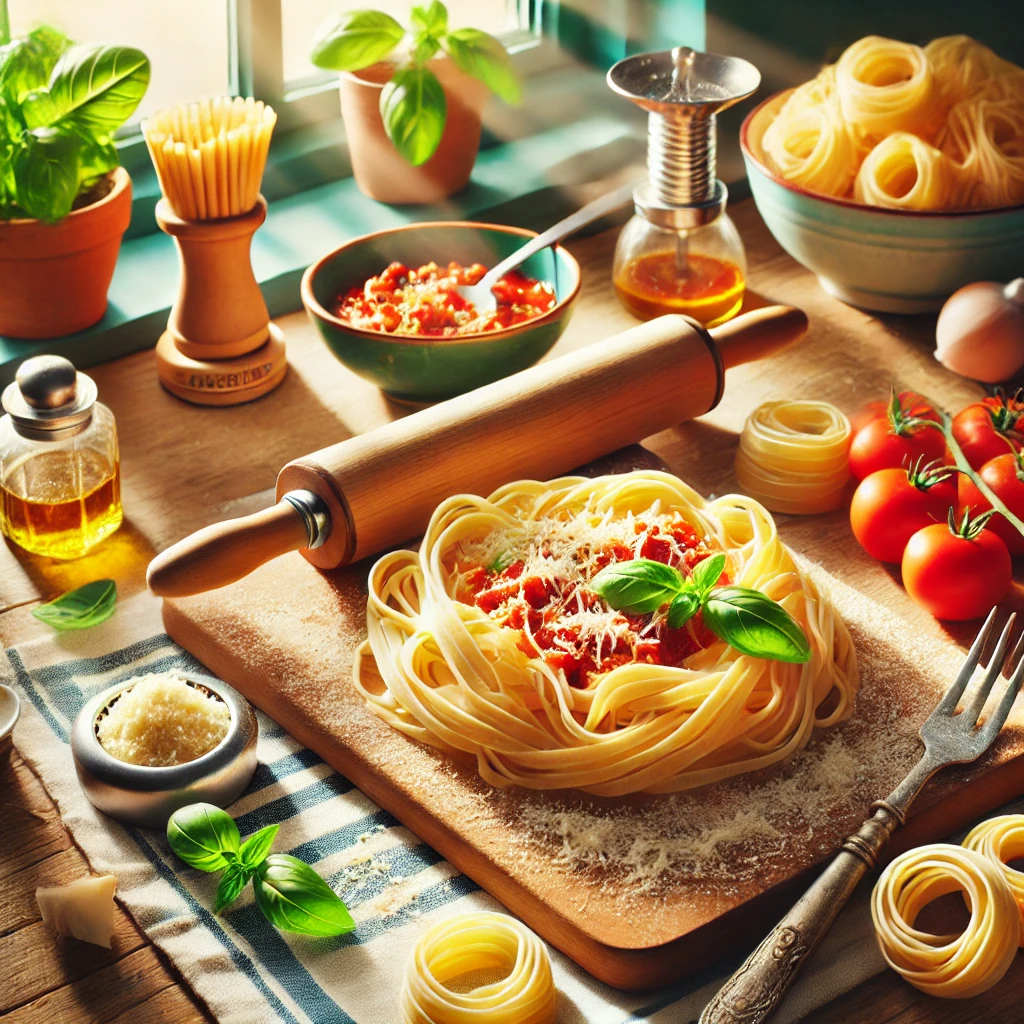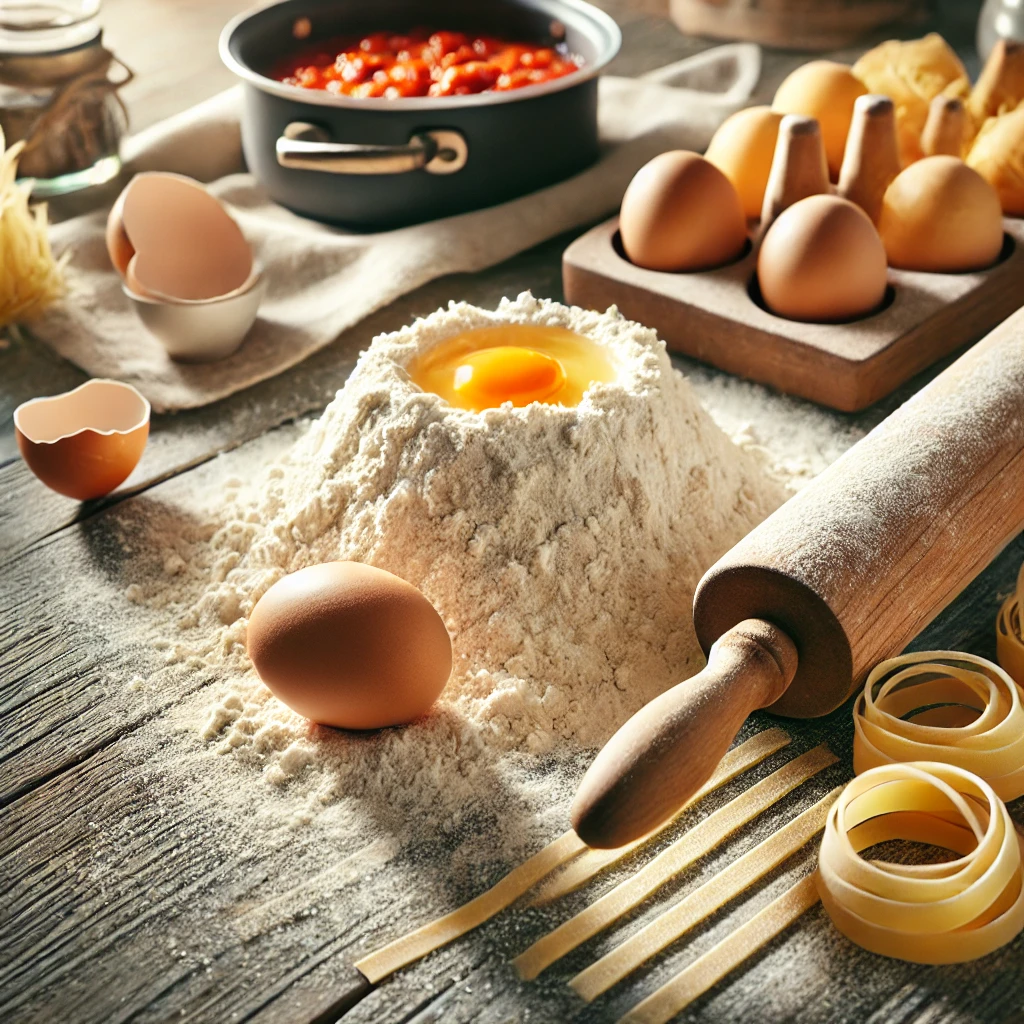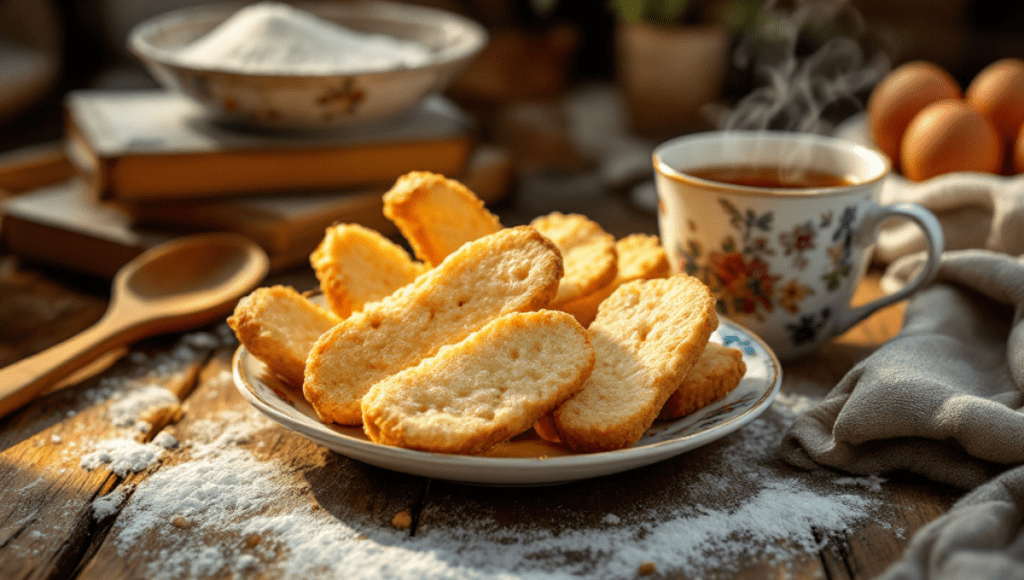Learn how to make pasta easily at home with this beginner-friendly, step-by-step guide. Fresh, delicious pasta made simple!
There is nothing that can be compared with the warmth of a bowl of pasta. To buy all this fresh and hot meals from the shop is good but to make at home is even very simple and guarantees unmatched quality and taste. This article will tell you exactly how to make pasta in easy steps at home, whether from scratch or with prepared, ready-to-use ingredients.
Now, let’s step into this world of deliciousness and learn how to make homemade pasta easily!
Step-by-Step Video Tutorial
Why Make Pasta at Home?
Cooking pasta at home isn’t just about food—it’s an experience. Here’s why you should try it:
Healthier Options: Homemade pasta contains no preservatives and can be made with wholesome ingredients like whole wheat or gluten-free flour.
Customizable: Choose your favorite flavors, shapes, and sauces for a truly personalized meal.
Family Fun: Rolling out dough or creating shapes can be a fun activity for all ages.
Cost-Effective: Simple ingredients like flour, eggs, and olive oil cost much less than store-bought gourmet pasta.
Patisa Recipe Soan Papdi Recipe

Essential Ingredients for Homemade Pasta
You don’t need a fancy pantry to make delicious pasta. Here’s what you’ll need:
For the Pasta Dough:
- Two cups of all-purpose flour (for a healthy alternative, use whole wheat flour)
- 3 large eggs
- 1 teaspoon salt
- 1 tablespoon olive oil
For the Sauce (Basic Tomato Sauce):
Fresh basil for garnish (optional)
2 tablespoons olive oil
2 garlic cloves, minced
1 can of crushed tomatoes (400g)
1 teaspoon dried basil or oregano
Salt and pepper to taste
Easy Pasta Making at Home: A Comprehensive Recipe
Step 1: Make the Dough
Homemade pasta starts with a simple yet versatile dough.
Combine Ingredients: On a clean surface or in a large bowl, create a mound with the flour. Crack the eggs into the well that has been created in the middle. Add the olive oil and salt.
Mix: Using a fork, gradually stir the flour into the eggs. Once it starts coming together, knead it with your hands until smooth and elastic. This should take about 8-10 minutes.
Rest the Dough: Cover the dough with plastic wrap and leave it for half an hour at room temperature. The gluten relaxes as a result, making it simpler to roll out the dough.
Step 2: Roll and Shape the Pasta
It’s time to form the dough once it has rested.
Divide the Dough: Cut the dough into smaller portions to make it easier to handle.
Roll It Out: Roll each part into thin sheets using a pasta maker or rolling pin. If you prefer thicker pasta, roll it slightly less.
Cut the Pasta: Use a knife or pasta cutter to shape your pasta into strips (tagliatelle), squares (ravioli), or whatever shape you prefer.

Step 3: Cook the Pasta
Fresh pasta cooks much faster than store-bought.
Bring a large pot of water to a boil. Add salt for seasoning.
After adding the pasta to the boiling water, cook it for two to three minutes, or until it is al dente. Be careful not to overcook it!
Step 4: Prepare the Sauce
While the pasta cooks, whip up a simple tomato sauce.
In a pan, heat the olive oil over medium heat. Sauté the minced garlic till it becomes aromatic.
Pour in the crushed tomatoes, dried herbs, salt, and pepper. Simmer for 5-7 minutes.
Taste and adjust the seasoning as needed.
Step 5: Combine and Serve
Mix the pasta with the sauce when it’s cooked.
Save a tiny cup of the pasta water after draining the noodles.
Add the pasta directly into the saucepan. Toss to coat evenly. Add a little of the pasta water you set aside if the sauce is too thick.
Add some parmesan cheese and fresh basil as garnish. Serve hot and enjoy!
Pro Tips for Perfect Pasta
Experiment with Flavors: Add a touch of spinach, beetroot, or squid ink to the dough for colorful and flavorful variations.
Use Fresh Ingredients: Fresh eggs and high-quality flour make a noticeable difference in the flavor and texture of your pasta.
Rest the Dough: Never skip the resting period—it makes rolling the dough much easier.
Salt the Water: Salting the pasta water enhances its flavor, as the pasta absorbs some of the salted water during cooking.
Common Mistakes to Avoid
- Skipping the Kneading: Proper kneading is essential for elastic and smooth dough.
- Overcooking the Pasta: Fresh pasta cooks quickly. Keep an eye on it to avoid mushiness.
- Using Too Much Flour: Excess flour can make the pasta dry. Use just enough to prevent sticking.
- Neglecting the Sauce: A good sauce is just as important as the pasta. Balance the flavors for a harmonious dish.
Nutritional Benefits of Homemade Pasta
Making pasta at home can be a healthier choice than store-bought alternatives. Here’s why:
- Lower Sodium: Homemade pasta and sauces allow you to control salt levels.
- No Preservatives: Unlike packaged pasta, homemade versions contain only natural ingredients.
- Higher Nutritional Value: Adding whole wheat flour or vegetables boosts fiber and nutrient content.
Frequently Asked Questions
Q: Can I make pasta without a machine?
A: Absolutely! A rolling pin works just as well. Just roll the dough as thin as possible and cut it into your desired shapes.
Q: How do I store homemade pasta?
A: Fresh pasta can be refrigerated for up to 2 days. For longer storage, dry the pasta completely or freeze it.
Q: Can I make pasta without eggs?
A: Yes! You can substitute eggs with water or use semolina flour for egg-free pasta.
Final Through
It is a simple process of actually making pasta at home, not a recipe – an adventure with flavors and ways. It doesn’t matter if you’re a grand master in the kitchen or new: this simple guide ensures that every time homemade pasta from this point forward is a success. Ingredients gathered, sleeves rolled, and oh sweet, sweet satisfaction of fresh pasta made in your kitchen.














1 thought on “How to make pasta easily at home 2025”
Nicely said